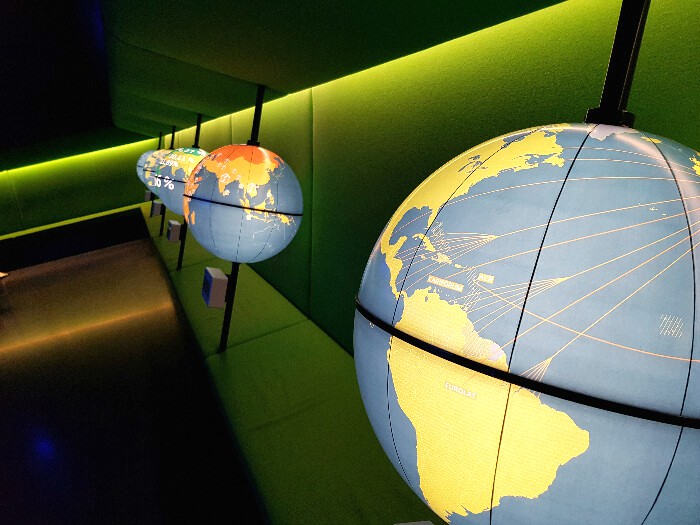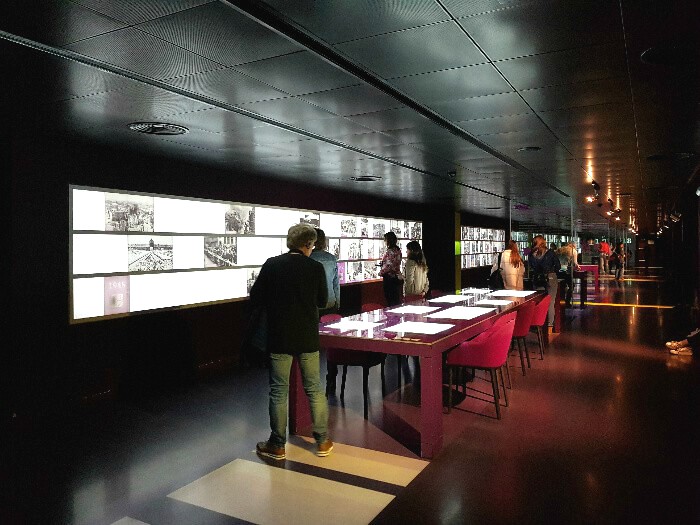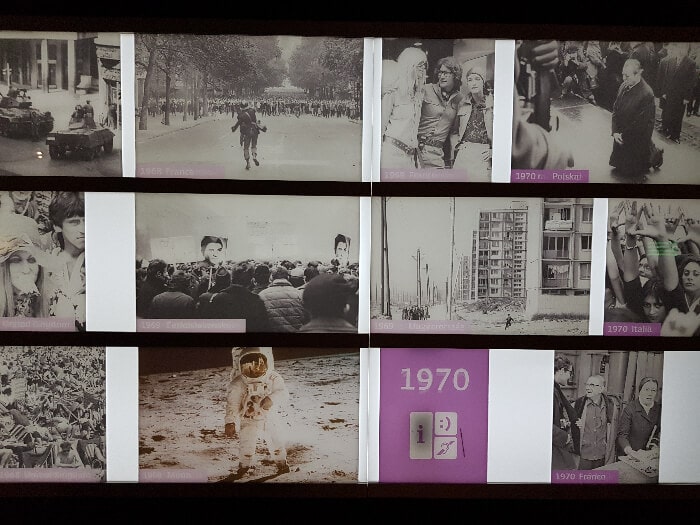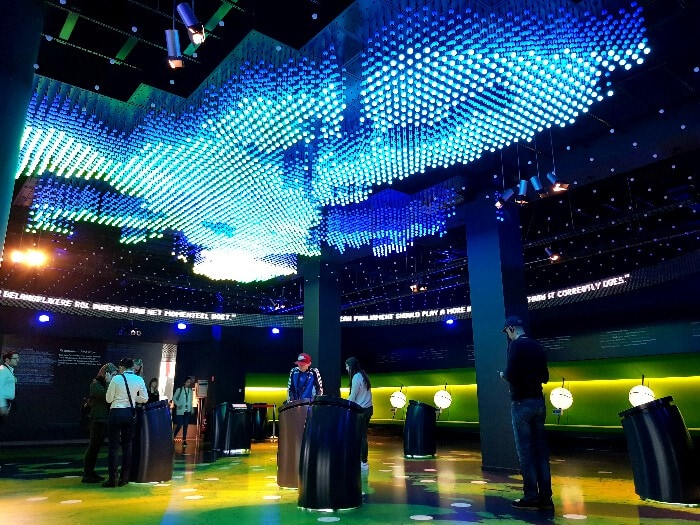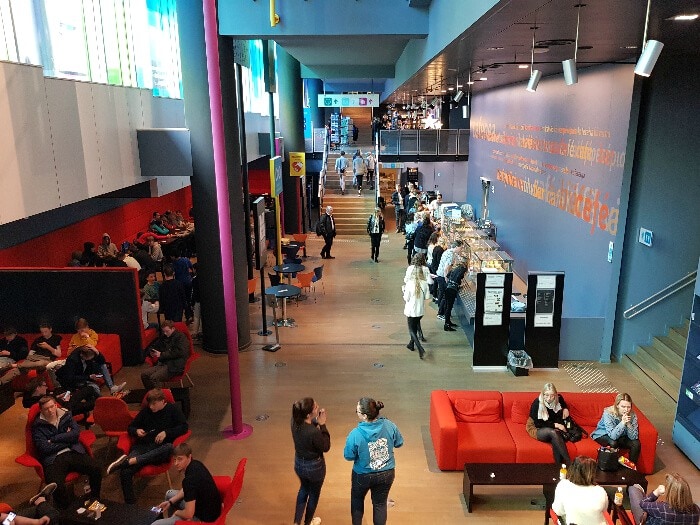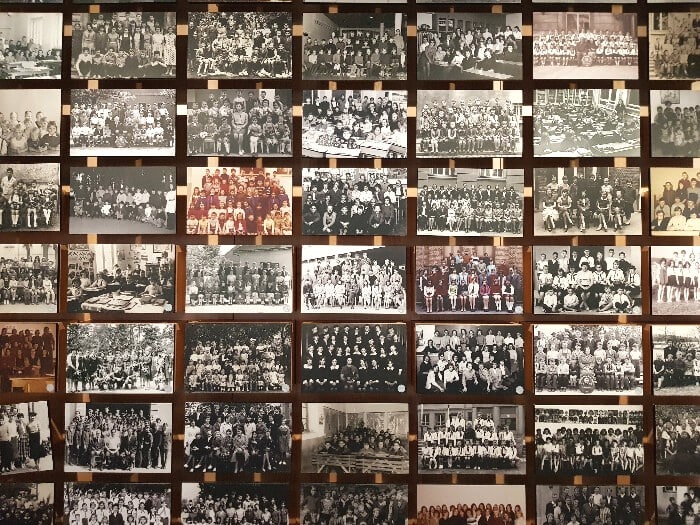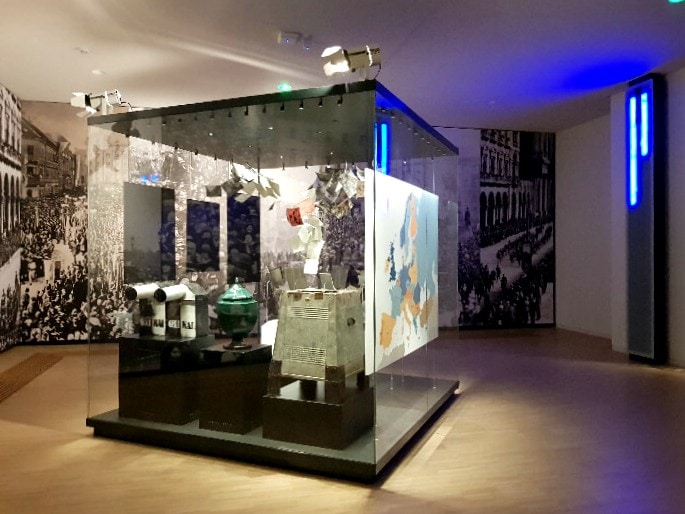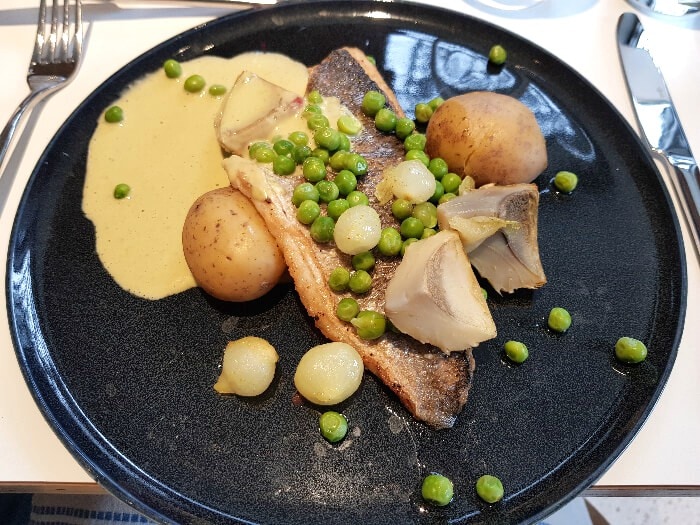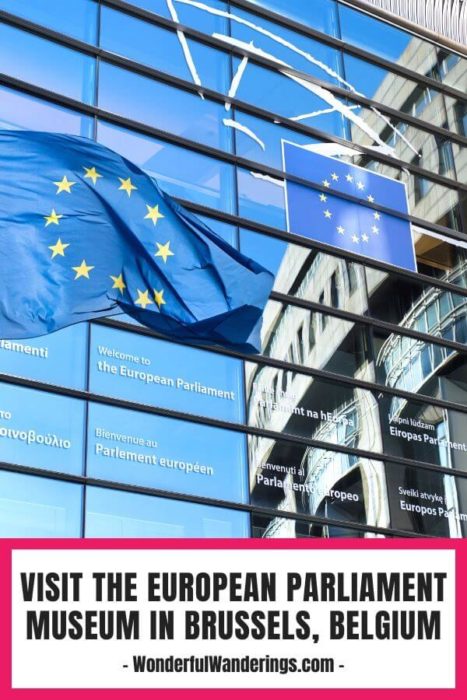Which European Parliament sights to visit
Most people know about the European Quarter in Brussels, but not everyone knows that you can also visit several of the European Parliament institutions. I went to see the Parlamentarium- the European Parliament museum, and also visited the nearby House of European History.
The Parlamentarium
The Parlamentarium is Europe's largest parliamentary visitor's center and welcomes visitors from all over the world. It is situated at the European Parliament in Brussels.
Through interactive multimedia displays, objects, photos, and information panels, visitors learn about the history and workings of the European Parliament.
The Parlamentarium answers questions like:
- What is the European Parliament?
- What does the European Parliament do?
- How do the EU Parliament elections work?
and pays attention to the different European Union countries and their role in the history of the European Union.
The experience starts with an overview of what makes the European Union unique and the challenges it currently faces.
Afterward, you walk through the “Tunnel of Voices” in which you can hear the different languages spoken by people throughout the European Union.
History of the European Parliament
Next up is the European Union history timeline, visitors go into a room with photos, interactive information panels, and maps that show the birth and growth of the EU.
The current role of the European Parliament
From the past, you move to the present as you're introduced to the current role of the European Parliament and the political groups active in it. A large photo wall puts you face to face with all the Members of the European Parliament. Then, computer screens give visitors of the Parlamentarium an interactive way to listen to the stories of regular people living in the EU whose lives are affected by the decisions made in the Parliament.
Interactive floor map
Probably the coolest experience at the Parlamentarium is the giant interactive floor map which lets you move a little cart from city to city to get more information about the EU project, agencies, and headquarters in the 28 Member States.

Practical information for your EU Parliament experience at the Parlamentarium
Entrance to the EU Parlamentarium is free for all visitors, as is the audio guide available in the 24 official European Union languages. The information on the interactive screens that you'll find throughout the exhibition is available in all those languages as well.
The Parlamentarium is fully accessible for visitors with special needs. There are free lockers and toilets, a gift shop for those who'd like to buy a souvenir and a large cafeteria offering drinks and snacks. There are also some international newspapers to read.
Upon entering the Parlamentarium, you need to go through a security check similar to the one at the airport. No need to take out your liquids, though :-)
You can spend as much or as little time at the Parlamentarium as you like. If you really listen to and read all the information available, you'll need well over an hour. It is Europe's largest parliamentary museum after all, so there is a lot to see! But if you're in a bit of a rush, you can definitely see the exhibition in a much shorter time span.
And as it's free, you won't need to feel too guilty about browsing through :-)
Opening hours:
Monday: 1 p.m. – 6 p.m.
Tuesday-Friday: 9 a.m. – 6 p.m.
Saturday- Sunday: 10 a.m. – 6 pm.
The entrance closes 30 minutes before the closing time of the Parlamentarium.
The Parlamentarium is closed on January 1, May 1, November 1, December 24, December 25 and December 31.
Address:
Willy Brandt Building
Esplanade Solidarnosc
Rue Wiertz 60
Brussels
For the most up-to-date information and opening hours, please visit the website at europarl.europa/eu/parlamentarium.
The House of European History
The House of European History takes you through key moments and important events in European History in no less than six floors. Its collection consists of objects both borrowed from other institutions and private collections and purchased.
The goal of The House is to only focus on those phenomena that have affected multiple or all countries on the European continent, highlighting our mutual history.
Visitors make their way through the exhibition by using a tablet which again provides information in all 24 official languages of the European Union. The tablet contains floor plans of the entire House and lets visitors choose which objects on display they want to learn more about.
Each floor also has kid-friendly “Discovery Spaces” where kids can learn about European history through interactive activities.
Practical information for visiting the House of European History
Entry is free and just like at the Parlamentarium, you need to pass a quick security check when going in. Free lockers are available for your jacket and a small backpack or other things.
Important: you need your ID or passport to be able to get a tablet.
There's a gift shop, as well as a restaurant serving refined meals.
If you're into European History, I recommend planning at least a few hours to visit the House. You can easily walk all the floors in an hour or two, but if you want to get all the information on the tablet, you'll need much more than that. If you live in Brussels or visit regularly, you could come back multiple times and just visit the House floor by floor.
Opening hours:
Monday: 1 p.m. – 6 p.m.
Tuesday-Friday: 9 a.m. – 6 p.m.
Saturday-Sunday: 10 a.m. – 6 p.m.
The museum is closed on January 1, May 1, November 1, December 24, December 25 and December 31.
Address
Rue Belliard 135
Brussels
For up-to-date information, please search the website at Historia-Europa.ep.eu.
The European Parliament Hemicycle
One place I didn't visit, but that is also open to the public sometimes, is the European Parliament Hemicycle. Entrance is free though groups do need to make a reservation. You need to bring your ID or passport to get in.
Here as well, a multimedia guide is available for visitors in the 24 official European languages.
Opening Hours: Monday – Thursday 9 a.m. – 4 p.m. & Friday 9 a.m. – 12 p.m.
More information on visiting the Hemicycle can be found on their website here.
And that's it! As you can see, the European Quarter is definitely a place you can spend a whole day if you visit all of the locations above.
Pin for later
I was invited by the Parlamentarium and the House of European History to come have a look so I could write about my experiences there. As always, my opinion expressed here is my own.

